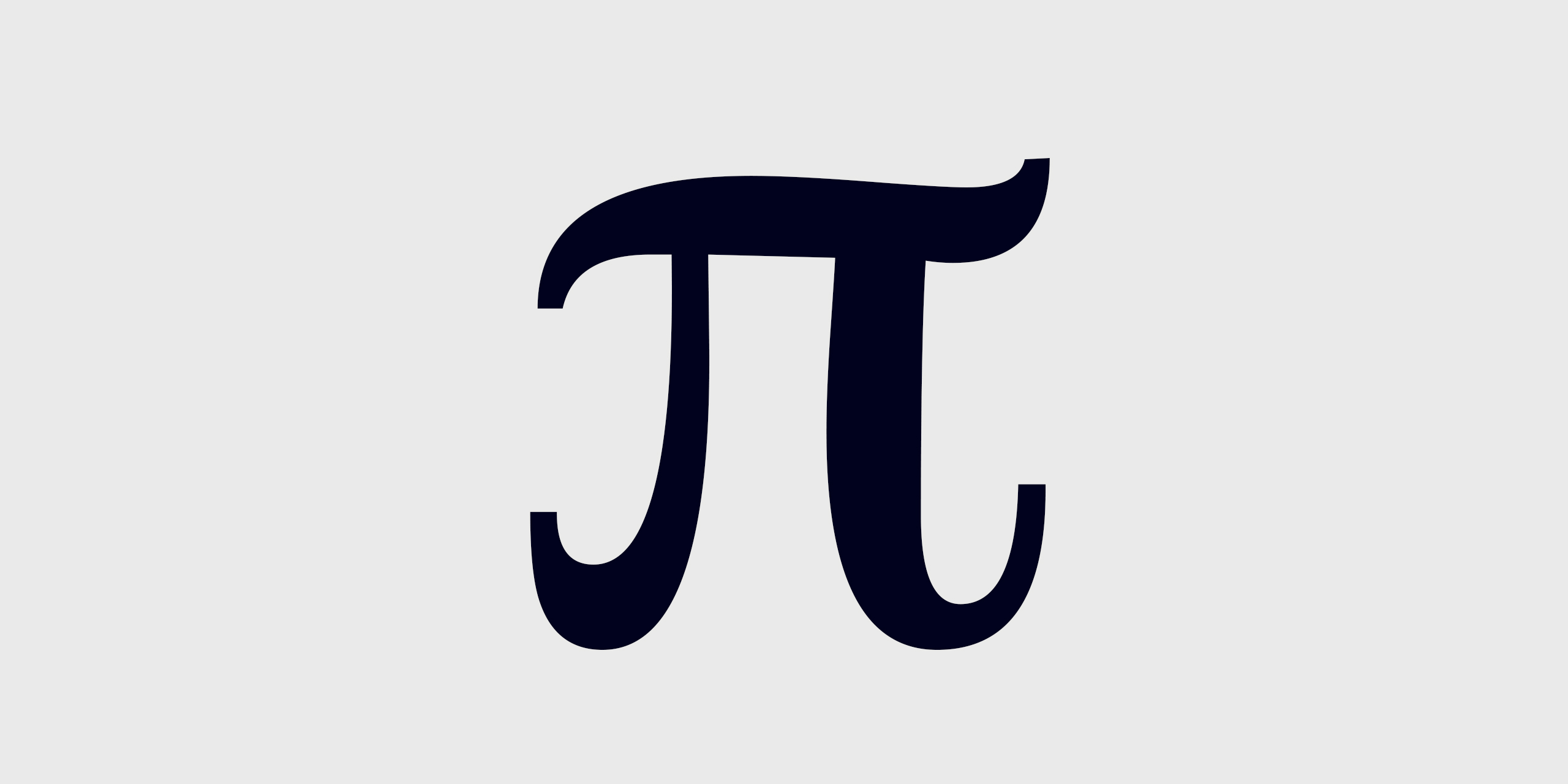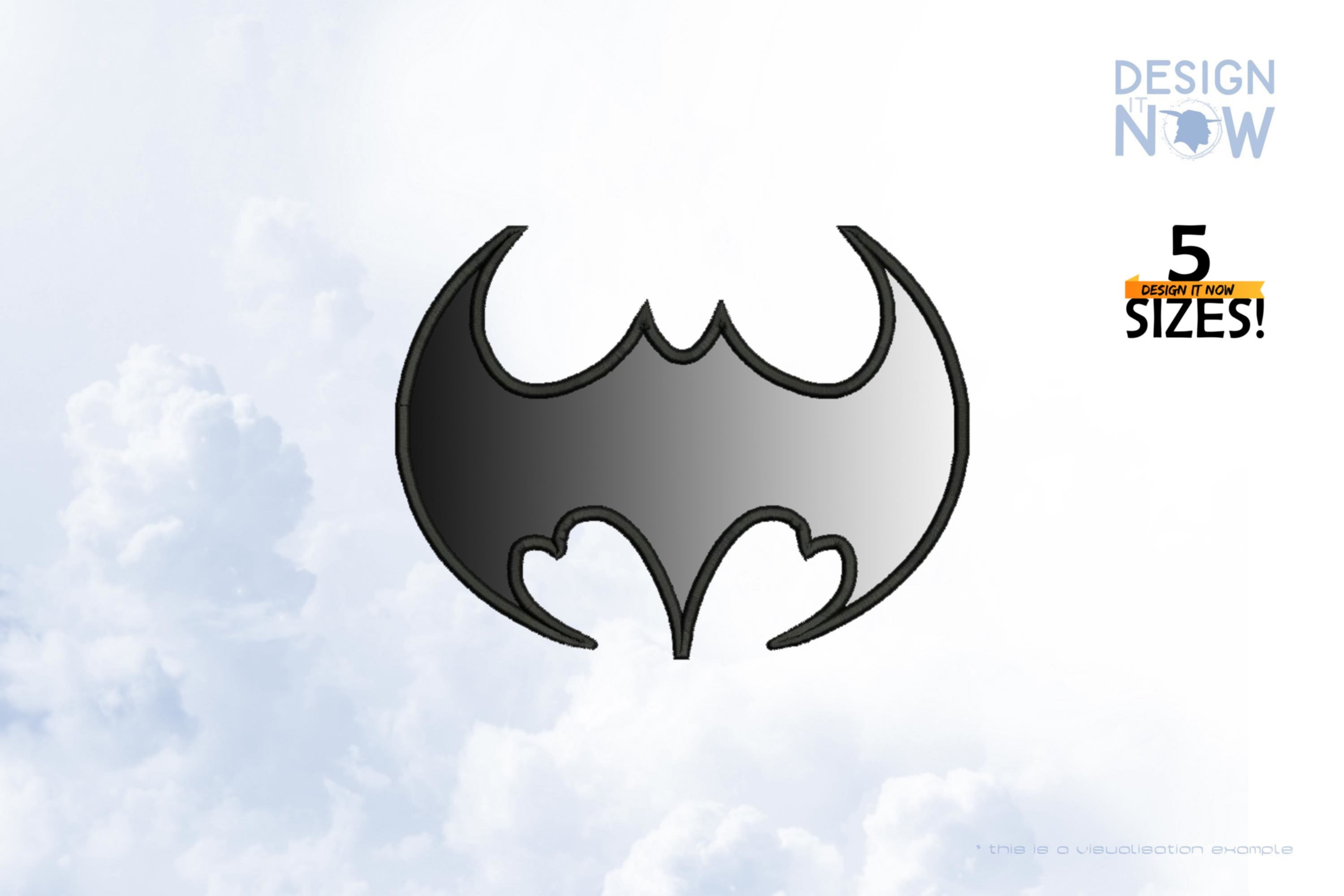
Symbols / Signs
The term symbol (ancient Greek σύμβολον sýmbolon 'recognition sign') or also allegory is generally used for carriers of meaning (signs, words, objects, processes, etc.) which designate an idea (of something which need not be present). Which conception is then concretely meant by the word 'symbol' is defined more precisely and sometimes very differently in the fields of application.
Empirical research on symbols has - after controversial approaches in the Third Reich - not been established at university level, but it is mainly carried out on an interdisciplinary basis. Important research associations are Symbolon - Society for Scientific Symbol Research (1955) and the Swiss Society for Symbol Research (1983). Symbol research as a theory of signs is referred to overarchingly as semiotics. The research of symbolic inscriptions, petroglyphs and ideographic symbols is called epigraphy; the research of symbolic images is part of iconography.
The signs of the zodiac are the symbolic images that mark the twelve sections of the zodiac. Beginning with the Aries point, they are defined as geometric circular sections of 30° each on the ecliptic, in front of which the Sun is located successively during a year, each one twelfth of the length of the year. In the antiquity, at the time of the naming of the signs of the zodiac, one believed however still to be able to recognize the topics of the year in the respective constellations. Therefore 12 of the 88 constellations have the names of signs of the zodiac. More than 2000 years ago Hipparchus discovered the precession, which made clear that the constellations are useless as indicators of the seasons in the long run. Then, from the 5th century onwards, in the astrology of the Orient and Eastern Mediterranean, the beginning of the zodiac sign Aries was consistently associated with the point of Aries. Prior to this, the signs of the zodiac were mainly equated with the ecliptic constellations of the sidereal zodiac, which appeared to shift due to precession.
The zodiac and its division into "signs" of 30° was possibly already developed or even already known during the Seleucid Empire in the 4th century BC in the area of Mesopotamia. For this time also the application of mathematical astronomy for the precalculation of planet positions, which would have been possible with the help of this coordinate system with 30° sections, is provable.
%
Head Symbol
The term symbol (ancient Greek σύμβολον sýmbolon 'recognition sign') or also allegory is generally used for carriers of meaning (signs, words, objects, processes, etc.) which designate an idea (of something which need not be present). Which conception is then concretely meant by the word 'symbol' is defined more precisely and sometimes very differently in the fields of application. Product Number: N10290Product Name: Figure-XThis design comes with the following sizes:Size: 4.60"(w) X 3.20"(h) (116.8mm X 81.4mm)Size: 4.63"(w) X 3.23"(h) (117.6mm X 82.0mm) Size: 5.45"(w) X 3.81"(h) (138.4mm X 96.8mm) Size: 5.57"(w) X 3.89"(h) (141.6mm X 98.8mm) Size: 5.74"(w) X 3.99"(h) (145.8mm X 101.4mm) Size: 5.82"(w) X 4.06"(h) (147.8mm X 103.0mm) Size: 5.94"(w) X 4.14"(h) (150.8mm X 105.2mm) Size: 6.01"(w) X 4.20"(h) (152.6mm X 106.6mm) Size: 6.05"(w) X 4.22"(h) (153.6mm X 107.2mm) Size: 6.12"(w) X 4.28"(h) (155.4mm X 108.6mm) Size: 6.24"(w) X 4.37"(h) (158.6mm X 111.0mm) Size: 6.64"(w) X 4.64"(h) (168.6mm X 117.8mm) Size: 6.79"(w) X 4.74"(h) (172.4mm X 120.4mm) Size: 6.87"(w) X 4.80"(h) (174.4mm X 122.0mm) Size: 7.00"(w) X 4.88"(h) (177.8mm X 124.0mm) Size: 7.23"(w) X 5.04"(h) (183.6mm X 128.0mm) Size: 7.43"(w) X 5.20"(h) (188.6mm X 132.0mm) Size: 7.54"(w) X 5.28"(h) (191.4mm X 134.0mm) Size: 7.66"(w) X 5.36"(h) (194.6mm X 136.2mm) Size: 7.75"(w) X 5.40"(h) (196.8mm X 137.2mm) Size: 8.06"(w) X 5.63"(h) (204.6mm X 143.0mm) Size: 8.09"(w) X 5.65"(h) (205.6mm X 143.4mm) Size: 8.41"(w) X 5.87"(h) (213.6mm X 149.2mm) Size: 8.45"(w) X 5.90"(h) (214.6mm X 149.8mm) Size: 8.61"(w) X 6.02"(h) (218.6mm X 153.0mm) Size: 8.69"(w) X 6.06"(h) (220.6mm X 154.0mm) Size: 8.93"(w) X 6.23"(h) (226.8mm X 158.2mm) Size: 8.95"(w) X 6.25"(h) (227.4mm X 158.8mm) Size: 9.20"(w) X 6.43"(h) (233.6mm X 163.4mm) Size: 9.28"(w) X 6.47"(h) (235.6mm X 164.4mm) Size: 9.31"(w) X 6.52"(h) (236.6mm X 165.6mm) Size: 9.39"(w) X 6.56"(h) (238.6mm X 166.6mm) Size: 10.02"(w) X 7.02"(h) (254.6mm X 178.2mm) Size: 10.23"(w) X 7.14"(h) (259.8mm X 181.4mm) Size: 10.45"(w) X 7.31"(h) (265.4mm X 185.6mm) Size: 10.86"(w) X 7.59"(h) (275.8mm X 192.8mm) Size: 11.01"(w) X 7.69"(h) (279.6mm X 195.4mm) Size: 13.21"(w) X 9.23"(h) (335.6mm X 234.4mm) Size: 13.40"(w) X 9.38"(h) (340.4mm X 238.2mm) Size: 14.86"(w) X 10.39"(h) (377.4mm X 263.8mm)The following formats are included in the file you will receive: .DST .EXP .JEF .PES .VP3 .XXX .PEC .U01You MUST have an embroidery machine and the software needed to transfer it from your computer to the machine to use this file. This listing is for the machine file only - not a finished item.Smiling Girl Face Head Symbol Machine Embroidery Design, Embroidery Pattern, Embroidery Art, DIY Project Ideas, Beautiful Digital Supplies For Embroidery Machines
US$1.10* US$4.40* (75% saved)
%
Dragon Circle Symbol
A dragon (Latin draco, Ancient Greek drakōn, "snake"; actually: "the staring one" or "sharp-eyed animal) among the Greeks and Romans the name for any non-poisonous larger snake species) is a serpent-like hybrid creature of mythology, in which characteristics of reptiles, birds and predators are combined in different variations. It is scaled in most myths, has two hind legs, two front legs, two wings (thus six limbs), and a long tail. It is said to have the ability to breathe fire. The dragon is known as a mythical creature from myths, legends and fairy tales of many cultures; until modern times, it was considered to be a real existing animal. In oriental and western creation myths, the dragon is a symbol of chaos, a monster hostile to God and man that holds back the fruit-bearing waters and threatens to devour the sun and moon. It must be overcome and killed by a hero or deity in battle so that the world can come into being or continue to exist (dragon slayer). In contrast, the East Asian dragon is a conflicting creature with predominantly positive qualities: rain and good luck bringer and symbol of fertility and imperial power.Product Number: N08987Product Name: Symbol-XVIII This design comes with the following sizes:Size: 5.23"(w) X 5.13"(h) (132.8mm X 130.4mm) Size: 5.31"(w) X 5.21"(h) (134.8mm X 132.4mm) Size: 5.35"(w) X 5.25"(h) (135.8mm X 133.4mm)Size: 5.39"(w) X 5.29"(h) (136.8mm X 134.4mm) Size: 5.43"(w) X 5.33"(h) (137.8mm X 135.4mm) Size: 5.46"(w) X 5.37"(h) (138.8mm X 136.4mm) Size: 5.50"(w) X 5.41"(h) (139.8mm X 137.4mm) Size: 5.54"(w) X 5.44"(h) (140.6mm X 138.2mm) Size: 5.58"(w) X 5.48"(h) (141.8mm X 139.2mm) Size: 5.62"(w) X 5.52"(h) (142.8mm X 140.2mm) Size: 5.70"(w) X 5.60"(h) (144.8mm X 142.2mm) Size: 5.74"(w) X 5.64"(h) (145.8mm X 143.2mm) Size: 5.77"(w) X 5.68"(h) (146.6mm X 144.2mm) Size: 5.82"(w) X 5.72"(h) (147.8mm X 145.2mm) Size: 5.90"(w) X 5.80"(h) (149.8mm X 147.2mm) Size: 5.94"(w) X 5.83"(h) (150.8mm X 148.2mm) Size: 5.98"(w) X 5.87"(h) (151.8mm X 149.2mm) Size: 6.01"(w) X 5.91"(h) (152.6mm X 150.0mm) Size: 6.06"(w) X 5.94"(h) (153.8mm X 151.0mm) Size: 6.09"(w) X 5.98"(h) (154.8mm X 152.0mm) Size: 6.13"(w) X 6.02"(h) (155.8mm X 153.0mm) Size: 6.25"(w) X 6.14"(h) (158.8mm X 156.0mm) Size: 6.37"(w) X 6.26"(h) (161.8mm X 159.0mm) Size: 6.49"(w) X 6.37"(h) (164.8mm X 161.8mm) Size: 6.53"(w) X 6.41"(h) (165.8mm X 162.8mm) Size: 6.57"(w) X 6.45"(h) (166.8mm X 163.8mm) Size: 6.65"(w) X 6.53"(h) (168.8mm X 165.8mm) Size: 6.72"(w) X 6.61"(h) (170.8mm X 167.8mm) Size: 6.76"(w) X 6.65"(h) (171.8mm X 168.8mm) Size: 6.80"(w) X 6.69"(h) (172.8mm X 169.8mm) Size: 6.84"(w) X 6.72"(h) (173.8mm X 170.8mm) Size: 6.87"(w) X 6.76"(h) (174.6mm X 171.6mm) Size: 6.96"(w) X 6.83"(h) (176.8mm X 173.6mm) Size: 7.00"(w) X 6.87"(h) (177.8mm X 174.6mm) Size: 7.08"(w) X 6.95"(h) (179.8mm X 176.6mm) Size: 7.15"(w) X 7.03"(h) (181.6mm X 178.6mm) Size: 7.20"(w) X 7.07"(h) (182.8mm X 179.6mm) Size: 7.24"(w) X 7.11"(h) (183.8mm X 180.6mm) Size: 7.28"(w) X 7.15"(h) (184.8mm X 181.6mm) Size: 7.39"(w) X 7.26"(h) (187.6mm X 184.4mm) Size: 7.58"(w) X 7.46"(h) (192.6mm X 189.4mm) Size: 7.62"(w) X 7.50"(h) (193.6mm X 190.4mm) Size: 7.67"(w) X 7.54"(h) (194.8mm X 191.4mm) Size: 7.71"(w) X 7.57"(h) (195.8mm X 192.4mm) Size: 7.86"(w) X 7.72"(h) (199.6mm X 196.2mm) Size: 7.94"(w) X 7.80"(h) (201.8mm X 198.2mm) Size: 7.98"(w) X 7.84"(h) (202.6mm X 199.2mm) Size: 8.02"(w) X 7.88"(h) (203.6mm X 200.2mm) Size: 8.14"(w) X 8.00"(h) (206.8mm X 203.2mm)Size: 8.21"(w) X 8.07"(h) (208.6mm X 205.0mm) Size: 8.34"(w) X 8.19"(h) (211.8mm X 208.0mm) Size: 8.38"(w) X 8.23"(h) (212.8mm X 209.0mm) Size: 8.42"(w) X 8.27"(h) (213.8mm X 210.0mm) Size: 8.85"(w) X 8.69"(h) (224.8mm X 220.8mm) Size: 8.92"(w) X 8.77"(h) (226.6mm X 222.8mm) Size: 8.96"(w) X 8.81"(h) (227.6mm X 223.8mm) Size: 9.31"(w) X 9.16"(h) (236.6mm X 232.6mm) Size: 9.52"(w) X 9.35"(h) (241.8mm X 237.6mm) Size: 9.83"(w) X 9.66"(h) (249.6mm X 245.4mm) Size: 10.02"(w) X 9.85"(h) (254.6mm X 250.2mm) Size: 10.34"(w) X 10.17"(h) (262.6mm X 258.2mm) Size: 10.42"(w) X 10.24"(h) (264.6mm X 260.0mm) Size: 10.65"(w) X 10.47"(h) (270.6mm X 266.0mm) Size: 10.85"(w) X 10.67"(h) (275.6mm X 271.0mm) Size: 10.93"(w) X 10.74"(h) (277.6mm X 272.8mm) Size: 12.58"(w) X 12.37"(h) (319.6mm X 314.2mm) Size: 12.74"(w) X 12.52"(h) (323.6mm X 318.0mm) Size: 12.90"(w) X 12.68"(h) (327.6mm X 322.0mm) Size: 12.98"(w) X 12.76"(h) (329.6mm X 324.0mm) Size: 14.16"(w) X 13.91"(h) (359.6mm X 353.4mm)The following formats are included in the file you will receive: .DST .EXP .JEF .PES .VP3 .XXX .PEC .U01You MUST have an embroidery machine and the software needed to transfer it from your computer to the machine to use this file. This listing is for the machine file only - not a finished item.Dragon Circle Symbol Machine Embroidery Design, Draco Embroidery Pattern, Snake Embroidery Art, Creature Of Mythology, Myths And Legends Animals DIY Project Ideas, Beautiful Digital Supplies For Embroidery Machines
US$1.10* US$4.40* (75% saved)
%
Lungta Wind Horse
Lungta, also known as the "wind horse", is a Tibetan mythical creature that is deeply rooted in Tibetan culture and symbolism.Product Number: N07556Product Name: LungtaThis design comes with the following sizes:Size: 8.93"(w) X 8.35"(h) (226.8mm X 212.2mm) Size: 9.76"(w) X 9.13"(h) (247.8mm X 231.8mm) Size: 10.35"(w) X 9.69"(h) (262.8mm X 246.0mm) Size: 10.62"(w) X 9.94"(h) (269.8mm X 252.4mm) Size: 11.61"(w) X 10.86"(h) (294.8mm X 275.8mm) Size: 11.80"(w) X 11.05"(h) (299.8mm X 280.6mm) Size: 12.63"(w) X 11.82"(h) (320.8mm X 300.2mm) Size: 13.77"(w) X 12.89"(h) (349.8mm X 327.4mm)The following formats are included in the file you will receive: .DST .EXP .JEF .PES .VP3 .XXX .PEC .U01You MUST have an embroidery machine and the software needed to transfer it from your computer to the machine to use this file. This listing is for the machine file only - not a finished item. Lungta Wind Horse Machine Embroidery Design, Tibetan Mythical Creature Embroidery Pattern, Embroidery Art, DIY Project Ideas, Beautiful Digital Supplies For Embroidery Machines
US$1.10* US$4.40* (75% saved)
%
Sun
The Sun is the star closest to Earth and forms the centre of the solar system. It is an average-sized star in the outer third of the Milky Way. The Sun is a dwarf star (yellow dwarf) that is in the evolutionary stage of the main sequence. It contains 99.86% of the mass, but only about 0.5% of the angular momentum of the solar system. Its diameter of 1.4 million kilometres is about 110 times that of the Earth. The surface of the sun shows a varying number of sunspots, which are associated with strong magnetic fields. Among other phenomena, they are called solar activity. Solar radiation is one of the basic requirements for the development and maintenance of life on Earth. The energy released by solar radiation is based on the nuclear fusion of hydrogen into helium, the so-called hydrogen burning in the proton-proton reaction. The celestial path of the sun divides the day and the year. It has been worshipped in this role in solar cults since prehistoric times. The astronomical symbol of the sun is ☉. Product Number: N09225Product Name: Abstract-People-XIThis design comes with the following sizes:Size: 4.93"(w) X 3.46"(h) (125.2mm X 87.8mm) Size: 5.09"(w) X 3.57"(h) (129.2mm X 90.6mm) Size: 5.13"(w) X 3.60"(h) (130.2mm X 91.4mm) Size: 5.35"(w) X 3.76"(h) (136.0mm X 95.6mm) Size: 5.43"(w) X 3.82"(h) (138.0mm X 97.0mm) Size: 5.51"(w) X 3.87"(h) (140.0mm X 98.4mm) Size: 5.55"(w) X 3.90"(h) (141.0mm X 99.0mm) Size: 5.71"(w) X 4.01"(h) (145.0mm X 101.8mm) Size: 5.75"(w) X 4.04"(h) (146.0mm X 102.6mm) Size: 5.79"(w) X 4.06"(h) (147.0mm X 103.2mm) Size: 5.87"(w) X 4.12"(h) (149.0mm X 104.6mm) Size: 5.91"(w) X 4.15"(h) (150.0mm X 105.4mm) Size: 5.94"(w) X 4.17"(h) (151.0mm X 106.0mm) Size: 5.98"(w) X 4.20"(h) (152.0mm X 106.8mm) Size: 6.02"(w) X 4.23"(h) (153.0mm X 107.4mm) Size: 6.06"(w) X 4.26"(h) (154.0mm X 108.2mm) Size: 6.10"(w) X 4.28"(h) (155.0mm X 108.8mm) Size: 6.22"(w) X 4.37"(h) (158.0mm X 111.0mm) Size: 6.34"(w) X 4.45"(h) (161.0mm X 113.0mm) Size: 6.38"(w) X 4.47"(h) (162.0mm X 113.6mm) Size: 6.50"(w) X 4.56"(h) (165.0mm X 115.8mm) Size: 6.54"(w) X 4.58"(h) (166.0mm X 116.4mm) Size: 6.61"(w) X 4.65"(h) (168.0mm X 118.0mm) Size: 6.77"(w) X 4.76"(h) (172.0mm X 120.8mm) Size: 6.85"(w) X 4.81"(h) (174.0mm X 122.2mm) Size: 6.92"(w) X 4.86"(h) (175.8mm X 123.4mm) Size: 6.96"(w) X 4.89"(h) (176.8mm X 124.2mm) Size: 7.04"(w) X 4.94"(h) (178.8mm X 125.4mm) Size: 7.20"(w) X 5.06"(h) (182.8mm X 128.4mm) Size: 7.31"(w) X 5.13"(h) (185.8mm X 130.4mm) Size: 7.35"(w) X 5.17"(h) (186.8mm X 131.2mm) Size: 7.63"(w) X 5.35"(h) (193.8mm X 136.0mm) Size: 7.67"(w) X 5.39"(h) (194.8mm X 136.8mm) Size: 7.71"(w) X 5.41"(h) (195.8mm X 137.4mm) Size: 7.83"(w) X 5.50"(h) (198.8mm X 139.6mm) Size: 8.02"(w) X 5.63"(h) (203.6mm X 143.0mm) Size: 8.41"(w) X 5.91"(h) (213.6mm X 150.0mm) Size: 8.57"(w) X 6.02"(h) (217.6mm X 152.8mm) Size: 8.65"(w) X 6.07"(h) (219.6mm X 154.2mm) Size: 9.24"(w) X 6.49"(h) (234.6mm X 164.8mm) Size: 9.28"(w) X 6.51"(h) (235.6mm X 165.4mm) Size: 9.35"(w) X 6.57"(h) (237.6mm X 166.8mm) Size: 10.17"(w) X 7.15"(h) (258.4mm X 181.6mm) Size: 10.41"(w) X 7.31"(h) (264.4mm X 185.6mm) Size: 13.15"(w) X 9.24"(h) (334.0mm X 234.6mm) Size: 13.35"(w) X 9.38"(h) (339.0mm X 238.2mm) The following formats are included in the file you will receive: .DST .EXP .JEF .PES .VP3 .XXX .PEC .U01You MUST have an embroidery machine and the software needed to transfer it from your computer to the machine to use this file. This listing is for the machine file only - not a finished item.Sun Machine Embroidery Design, Tribal Sun Sign Embroidery Pattern, Embroidery Art, DIY Project Idea, Original Digital Supplies For Embroidery Machines, Artsupplies For Handmade Embroidery Projects, Quality Embroidery Digitizing
US$1.10* US$4.40* (75% saved)
%
Dancing Pair
Dance is the transformation of inspiration (usually music and/or rhythm) into movement. Dancing is a ritual, a custom, a performing art genre, a professional activity, a sport, a form of therapy, a form of social interaction, or simply an expression of feeling. Other internationally used terms for dance titles are danza and danca. Dancing has many functions in society, but can also be an end in itself or a pastime. Ritualized dancing expresses togetherness and emotions and can accompany the acceptance of new members into a community as a festive initiation rite, for example when young girls are introduced to society at the debutante ball or when students celebrate passing an exam at the prom. Against a religious background, dance rituals honor gods or ask for assistance, while warding off or driving away evil spirits. Dancing as a sport promotes muscle development, motor skills, coordination and sense of balance. Successfully learning, planning and implementing complex movement sequences builds self-confidence and supports a healthy relationship with one's own body. As an art form, dancing serves to represent feelings and actions pictorially. Facial expressions, gestures and full-body dance movements, together with music, form the demanding working material of artistic dance, which shows the audience the elegance and expressiveness of the human body.Product Number: N10310Product Name: Dance-IThis design comes with the following sizes:Size: 5.41"(w) X 5.77"(h) (137.4mm X 146.6mm) Size: 5.48"(w) X 5.85"(h) (139.2mm X 148.6mm) Size: 5.81"(w) X 6.20"(h) (147.6mm X 157.6mm) Size: 5.88"(w) X 6.28"(h) (149.4mm X 159.6mm) Size: 5.99"(w) X 6.40"(h) (152.2mm X 162.6mm) Size: 6.10"(w) X 6.51"(h) (155.0mm X 165.4mm) Size: 6.21"(w) X 6.63"(h) (157.8mm X 168.4mm) Size: 6.44"(w) X 6.87"(h) (163.6mm X 174.6mm) Size: 6.55"(w) X 6.99"(h) (166.4mm X 177.6mm) Size: 6.73"(w) X 7.18"(h) (171.0mm X 182.4mm) Size: 6.77"(w) X 7.23"(h) (172.0mm X 183.6mm) Size: 6.99"(w) X 7.46"(h) (177.6mm X 189.6mm) Size: 7.02"(w) X 7.50"(h) (178.4mm X 190.4mm) Size: 7.10"(w) X 7.57"(h) (180.4mm X 192.4mm) Size: 7.65"(w) X 8.17"(h) (194.4mm X 207.4mm) Size: 7.72"(w) X 8.24"(h) (196.2mm X 209.4mm) Size: 7.76"(w) X 8.28"(h) (197.2mm X 210.4mm) Size: 8.02"(w) X 8.56"(h) (203.8mm X 217.4mm) Size: 8.06"(w) X 8.60"(h) (204.6mm X 218.4mm) Size: 8.28"(w) X 8.83"(h) (210.2mm X 224.4mm) Size: 8.35"(w) X 8.91"(h) (212.2mm X 226.4mm) Size: 9.13"(w) X 9.74"(h) (231.8mm X 247.4mm) Size: 9.68"(w) X 10.33"(h) (245.8mm X 262.4mm) Size: 9.94"(w) X 10.61"(h) (252.4mm X 269.4mm) Size: 10.86"(w) X 11.59"(h) (275.8mm X 294.4mm) Size: 11.04"(w) X 11.79"(h) (280.4mm X 299.4mm) Size: 12.88"(w) X 13.75"(h) (327.2mm X 349.2mm)The following formats are included in the file you will receive: .DST .EXP .JEF .PES .VP3 .XXX .PEC .U01You MUST have an embroidery machine and the software needed to transfer it from your computer to the machine to use this file. This listing is for the machine file only - not a finished item.Dance Dancing Pair Symbol Weeding Machine Embroidery Design, Performing Art Embroidery Pattern, Dancing Designs, Movement Embroidery Art, DIY Project Idea, Unique Digital Supplies For Embroidery Machines
US$1.10* US$4.40* (75% saved)
%
Dancing Pair Symbol
Dance is the transformation of inspiration (usually music and/or rhythm) into movement. Dancing is a ritual, a custom, a performing art genre, a professional activity, a sport, a form of therapy, a form of social interaction, or simply an expression of feeling. Other internationally used terms for dance titles are danza and danca. Dancing has many functions in society, but can also be an end in itself or a pastime. Ritualized dancing expresses togetherness and emotions and can accompany the acceptance of new members into a community as a festive initiation rite, for example when young girls are introduced to society at the debutante ball or when students celebrate passing an exam at the prom. Against a religious background, dance rituals honor gods or ask for assistance, while warding off or driving away evil spirits. Dancing as a sport promotes muscle development, motor skills, coordination and sense of balance. Successfully learning, planning and implementing complex movement sequences builds self-confidence and supports a healthy relationship with one's own body. As an art form, dancing serves to represent feelings and actions pictorially. Facial expressions, gestures and full-body dance movements, together with music, form the demanding working material of artistic dance, which shows the audience the elegance and expressiveness of the human body.Product Number: N10200Product Name: Dance-XIVThis design comes with the following sizes:Size: 2.13"(w) X 3.10"(h) (54.0mm X 78.8mm) Size: 4.00"(w) X 5.81"(h) (101.6mm X 147.6mm) Size: 4.03"(w) X 5.85"(h) (102.4mm X 148.6mm) Size: 4.27"(w) X 6.20"(h) (108.4mm X 157.6mm) Size: 4.39"(w) X 6.36"(h) (111.4mm X 161.6mm) Size: 4.40"(w) X 6.40"(h) (111.8mm X 162.6mm) Size: 4.43"(w) X 6.43"(h) (112.6mm X 163.4mm) Size: 4.57"(w) X 6.63"(h) (116.0mm X 168.4mm) Size: 4.59"(w) X 6.68"(h) (116.6mm X 169.6mm) Size: 4.62"(w) X 6.72"(h) (117.4mm X 170.6mm) Size: 4.65"(w) X 6.76"(h) (118.2mm X 171.6mm) Size: 4.73"(w) X 6.87"(h) (120.2mm X 174.6mm) Size: 4.87"(w) X 7.07"(h) (123.8mm X 179.6mm) Size: 4.95"(w) X 7.19"(h) (125.8mm X 182.6mm) Size: 4.98"(w) X 7.23"(h) (126.6mm X 183.6mm) Size: 5.24"(w) X 7.62"(h) (133.2mm X 193.6mm) Size: 5.30"(w) X 7.69"(h) (134.6mm X 195.4mm) Size: 5.41"(w) X 7.86"(h) (137.4mm X 199.6mm) Size: 5.50"(w) X 7.98"(h) (139.6mm X 202.6mm) Size: 5.57"(w) X 8.09"(h) (141.6mm X 205.4mm) Size: 5.72"(w) X 8.29"(h) (145.2mm X 210.6mm) Size: 5.80"(w) X 8.40"(h) (147.2mm X 213.4mm) Size: 5.98"(w) X 8.69"(h) (151.8mm X 220.6mm) Size: 6.01"(w) X 8.72"(h) (152.6mm X 221.6mm) Size: 6.17"(w) X 8.95"(h) (156.8mm X 227.4mm) Size: 6.28"(w) X 9.11"(h) (159.4mm X 231.4mm) Size: 6.50"(w) X 9.43"(h) (165.0mm X 239.4mm) Size: 6.98"(w) X 10.13"(h) (177.4mm X 257.4mm) Size: 7.80"(w) X 11.31"(h) (198.2mm X 287.4mm) Size: 7.86"(w) X 11.39"(h) (199.6mm X 289.4mm) Size: 10.23"(w) X 14.85"(h) (259.8mm X 377.2mm) The following formats are included in the file you will receive: .DST .EXP .JEF .PES .VP3 .XXX .PEC .U01You MUST have an embroidery machine and the software needed to transfer it from your computer to the machine to use this file. This listing is for the machine file only - not a finished item.Dancing Pair Symbol Machine Embroidery Design, Performing Art Embroidery Pattern, Dancing Designs, Movement Embroidery Art, DIY Project Idea, Unique Digital Supplies For Embroidery Machines
US$1.10* US$4.40* (75% saved)
%
Dragon Symbol
A dragon (Latin draco, Ancient Greek drakōn, "snake"; actually: "the staring one" or "sharp-eyed animal) among the Greeks and Romans the name for any non-poisonous larger snake species) is a serpent-like hybrid creature of mythology, in which characteristics of reptiles, birds and predators are combined in different variations. It is scaled in most myths, has two hind legs, two front legs, two wings (thus six limbs), and a long tail. It is said to have the ability to breathe fire. The dragon is known as a mythical creature from myths, legends and fairy tales of many cultures; until modern times, it was considered to be a real existing animal. In oriental and western creation myths, the dragon is a symbol of chaos, a monster hostile to God and man that holds back the fruit-bearing waters and threatens to devour the sun and moon. It must be overcome and killed by a hero or deity in battle so that the world can come into being or continue to exist (dragon slayer). In contrast, the East Asian dragon is a conflicting creature with predominantly positive qualities: rain and good luck bringer and symbol of fertility and imperial power.Product Number: N03615Product Name: DragonThis design comes with the following sizes:Size: 5.19"(w) X 6.69"(h) (131.9 X 170.0mm)Size: 6.10"(w) X 7.87"(h) (154.9 X 199.9mm)The following formats are included in the file you will receive: .DST .EXP .JEF .PES .VP3 .XXX .VIP .HUSYou MUST have an embroidery machine and the software needed to transfer it from your computer to the machine to use this file. This listing is for the machine file only - not a finished item.Dragon Machine Embroidery Design, Draco Embroidery Pattern, Snake Embroidery Art, Creature Of Mythology, Myths And Legends Animals DIY Project Ideas, Beautiful Digital Supplies For Embroidery Machines
US$1.10* US$4.40* (75% saved)
%
Cloud Saying
A cloud is a collection of very fine water droplets (fog) or ice crystals in the atmosphere. Clouds are visible because light is scattered due to Mie scattering, which causes the Tyndall effect to occur and the droplets, which are actually colorless, become visible. Product Number: E00486Product Name: CloudThis design comes with the following sizes:Size: 5.28"(w) X 1.13"(h) (134.2 X 28.6mm) Size: 5.87"(w) X 1.24"(h) (149.0 X 31.6mm) Size: 6.52"(w) X 1.39"(h) (165.6 X 35.2mm) Size: 7.24"(w) X 1.54"(h) (184.0 X 39.0mm) Size: 8.05"(w) X 1.71"(h) (204.4 X 43.4mm) Size: 8.94"(w) X 1.90"(h) (227.0 X 48.2mm) Size: 11.03"(w) X 2.34"(h) (280.2 X 59.4mm) Size: 9.93"(w) X 2.10"(h) (252.2 X 53.4mm)The following formats are included in the file you will receive: .DST .EXP .JEF .PES .VP3 .XXX .VIP .HUSYou MUST have an embroidery machine and the software needed to transfer it from your computer to the machine to use this file. This listing is for the machine file only - not a finished item.Cloud Saying Machine Embroidery Design, Children Embroidery Pattern, Embroidery Art, DIY Project Ideas, Beautiful Digital Supplies For Embroidery Machines
US$1.10* US$4.40* (75% saved)
%
Music Bars
In music notation, a bar (or measure) is a segment of music that is bounded by vertical lines, so-called barlines lines. The length of the bar, measured by the number of notes it contains, is usually indicated by the time signature. .Music is a genre of art whose works consist of organized sounds that can evoke sensations or associations. Tones, sounds and noises, as well as their acoustic properties, such as volume or intensity (dynamics), timbre, pitch and tone duration, serve as source material. The ability of humans to distinguish musical sound events from other acoustic stimuli is one of the most complex achievements of the human brain. Thus, sequences of different individual tones, which are combined into horizontal tone constellations through temporal means such as rhythm, meter and tempo, can be perceived as melodies, while vocal and instrumental polyphony give rise to vertical combinations of different pitches. Music is a cultural asset and the subject of musicology. Product Number: E00588Product Name: MusicThis design comes with the following sizes:Size: 3.11"(w) X 2.70"(h) (79.0 X 68.7mm) Size: 3.46"(w) X 3.00"(h) (87.8 X 76.3mm) Size: 3.83"(w) X 3.34"(h) (97.4 X 84.8mm) Size: 4.26"(w) X 3.71"(h) (108.2 X 94.2mm) Size: 4.73"(w) X 4.12"(h) (120.2 X 104.6mm) Size: 5.26"(w) X 4.57"(h) (133.6 X 116.2mm) Size: 5.84"(w) X 5.08"(h) (148.4 X 129.0mm) Size: 6.49"(w) X 5.65"(h) (164.8 X 143.4mm) Size: 7.20"(w) X 6.27"(h) (183.0 X 159.2mm) Size: 8.01"(w) X 6.96"(h) (203.4 X 176.8mm)The following formats are included in the file you will receive: .DST .EXP .JEF .PES .VP3 .XXX .VIP .HUSYou MUST have an embroidery machine and the software needed to transfer it from your computer to the machine to use this file. This listing is for the machine file only - not a finished item.Music Bars Machine Embroidery Design, Sounds And Melodies Embroidery Pattern, Musicology Embroidery Art, DIY Project Idea, Original Digital Supplies For Embroidery Machines, Artsupplies For Handmade Embroidery Projects, Quality Embroidery Digitizing
US$1.10* US$4.40* (75% saved)
%
Bat Applique
A bat is a mammal that can fly and belongs to the group of bats. Bats have wings that span from the wrists to the ankles and stretch skins between the wrists and shoulders, between the fingers, and between the legs. They are the only mammals that can fly. Bats have dense fur, usually brown, gray, or almost black in color, and flying skin that stretches from their wrists to their ankles. They can live to a surprising age, 20 to 30 years. Bats are nocturnal and spend the day resting and sleeping in their hiding places, which can be tree or rock cavities, attics, or ruins. They feed mainly on insects, but also on fruit, birds, fish, or small bats.Product Number: A00291Product Name: BatThis design comes with the following sizes:Size: 3.98"(w) X 2.99"(h) (101.2 X 76.0mm) Size: 4.74"(w) X 3.59"(h) (120.4 X 91.2mm) Size: 5.53"(w) X 4.19"(h) (140.4 X 106.4mm) Size: 6.71"(w) X 5.08"(h) (170.4 X 129.0mm) Size: 7.85"(w) X 5.94"(h) (199.4 X 151.0mm) The following formats are included in the file you will receive: .DST .EXP .JEF .PES .VP3 .XXX .VIP .HUSYou MUST have an embroidery machine and the software needed to transfer it from your computer to the machine to use this file. This listing is for the machine file only - not a finished item.Bat Applique Machine Embroidery Design, Bats Embroidery Pattern, Flying Mammals Embroidery Art, DIY Project Ideas, Beautiful Digital Supplies For Embroidery Machines
US$1.10* US$4.40* (75% saved)
%
Eagle Head Birds Of Prey
The term eagle (from Middle High German adelar[e] for 'noble eagle', where eagle meant eagle and eagle-like (ignoble eagles)) is in a broader sense a not exactly defined collective name for large and powerful species of birds of prey in the hawk family, such as for the genus of sea eagles, white-tailed eagle, the short-toed eagle or the Philippine eagle. In a narrower sense, the term eagle stands for the genus of true eagle (Aquila) with its associated species. Their largest living representatives are the golden eagle and the wedge-tailed eagle. Outside of the hawks, the osprey, which belongs to its own family, is also counted among the eagles in German.With a wingspan of up to 3 meters, the Shark Eagle (Harpagornis moorei), which became extinct around 1400 AD, is considered the largest known eagle. Its habitat was in New Zealand. The extraordinary visual acuity of their eyes allows all eagles to spot and hunt their prey even from great heights. Their main prey are ground-dwelling vertebrates, primarily mammals. Only rarely do they feed on carrion. Eagles are very well adapted to use updrafts to fly. The eagle grasps prey with its talons as it swoops down from flight. In doing so, three of its toes point forward and the rear claw pierces the prey's body in a pincer movement. The prey is suffocated by the grip.The female usually lays two to three eggs in the nest built from twigs (eagle's nest). Often, however, only one of the young is raised. All eagle species are protected, their population is endangered by human influence. The art of the ancient Orient uses the eagle in many variations as a symbolic animal. Already 3000 B.C. the mixed creature lion eagle is found in Mesopotamian representations, double eagles are known from Babylonia of the 23rd century B.C.. In many North American Indian tribes, their feathers - mostly as headdresses - were considered a sign of bravery, and they made pipes from their bones.Product Number: N03648Product Name: eagleThis design comes with the following sizes:Size: 1.96"(w) X 1.76"(h) (49.9 X 44.8mm) Size: 2.76"(w) X 2.46"(h) (70.1 X 62.6mm) Size: 3.34"(w) X 2.98"(h) (84.9 X 75.8mm) Size: 3.93"(w) X 3.53"(h) (99.9 X 89.6mm)Size: 4.24"(w) X 4.73"(h) (107.8 X 120.1mm) Size: 4.94"(w) X 5.51"(h) (125.6 X 140.0mm) Size: 6.01"(w) X 6.70"(h) (152.6 X 170.1mm) Size: 7.07"(w) X 7.87"(h) (179.6 X 200.0mm)The following formats are included in the file you will receive: .DST .EXP .JEF .PES .VP3 .XXX .VIP .HUSYou MUST have an embroidery machine and the software needed to transfer it from your computer to the machine to use this file. This listing is for the machine file only - not a finished item.Eagle Head Birds Of Prey Machine Embroidery Design, Noble Eagle Embroidery Pattern, Species Of Birds Of Prey Designs, Ancient Orient Symbolic Animal Embroidery Art, DIY Embroidery Project Idea, Unique Digital Supplies For Embroidery Machines
US$1.10* US$4.40* (75% saved)
%
Pinguin Tux
The penguins (Spheniscidae) are a group of flightless seabirds of the southern hemisphere and form the only family in the order Sphenisciformes. Their phylogenetic sister group is probably the loons (Gaviiformes) and tube-noses (Procellariiformes). Penguins are easily distinguished from all other birds and are outstandingly adapted to life in the sea and in the sometimes extreme cold zones of the earth.Penguins live in the open seas of the southern hemisphere. There they are found in particular in the coastal waters of Antarctica, New Zealand, southern Australia, South Africa, Namibia (Penguin Islands), southern Angola, on the Falkland Islands off South America and up the west coast to Peru, as well as on the Galápagos Islands located on the equator. As cold-loving birds, they occur in tropical areas only when cold-water currents exist; this is the case, for example, on the west coast of South America with the Humboldt Current or around South Africa with the Benguela Current at the Cape Peninsula.Most species live roughly between latitudes 45 and 60 degrees south; the largest numbers of individuals are found around Antarctica and on nearby islands. No penguins live in the northern hemisphere, with the exception of zoo animals and part of the population of the Galápagos penguin on the equatorial Galápagos island of Isabela.Product Number: N03731Product Name: TuxThis design comes with the following sizes:Size: 3.26"(w) X 3.94"(h) (82.8 X 100.2mm) Size: 3.91"(w) X 4.73"(h) (99.2 X 120.2mm) Size: 4.56"(w) X 5.52"(h) (115.8 X 140.2mm) Size: 5.54"(w) X 6.70"(h) (140.6 X 170.2mm) Size: 6.47"(w) X 7.84"(h) (164.4 X 199.2mm) The following formats are included in the file you will receive: .DST .EXP .JEF .PES .VP3 .XXX .PEC .U01You MUST have an embroidery machine and the software needed to transfer it from your computer to the machine to use this file. This listing is for the machine file only - not a finished item.Tux Penguin Machine Embroidery Design, Tube Noses Animals Embroidery Pattern, Penguins Designs, Antarctica Open Seas Animals Embroidery Art, Seabird Embroidery, DIY Project Idea, Unique Digital Supplies For Embroidery Machines
US$1.10* US$4.40* (75% saved)















